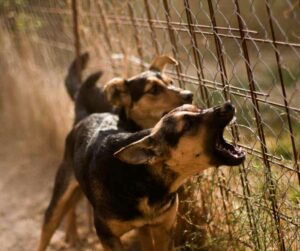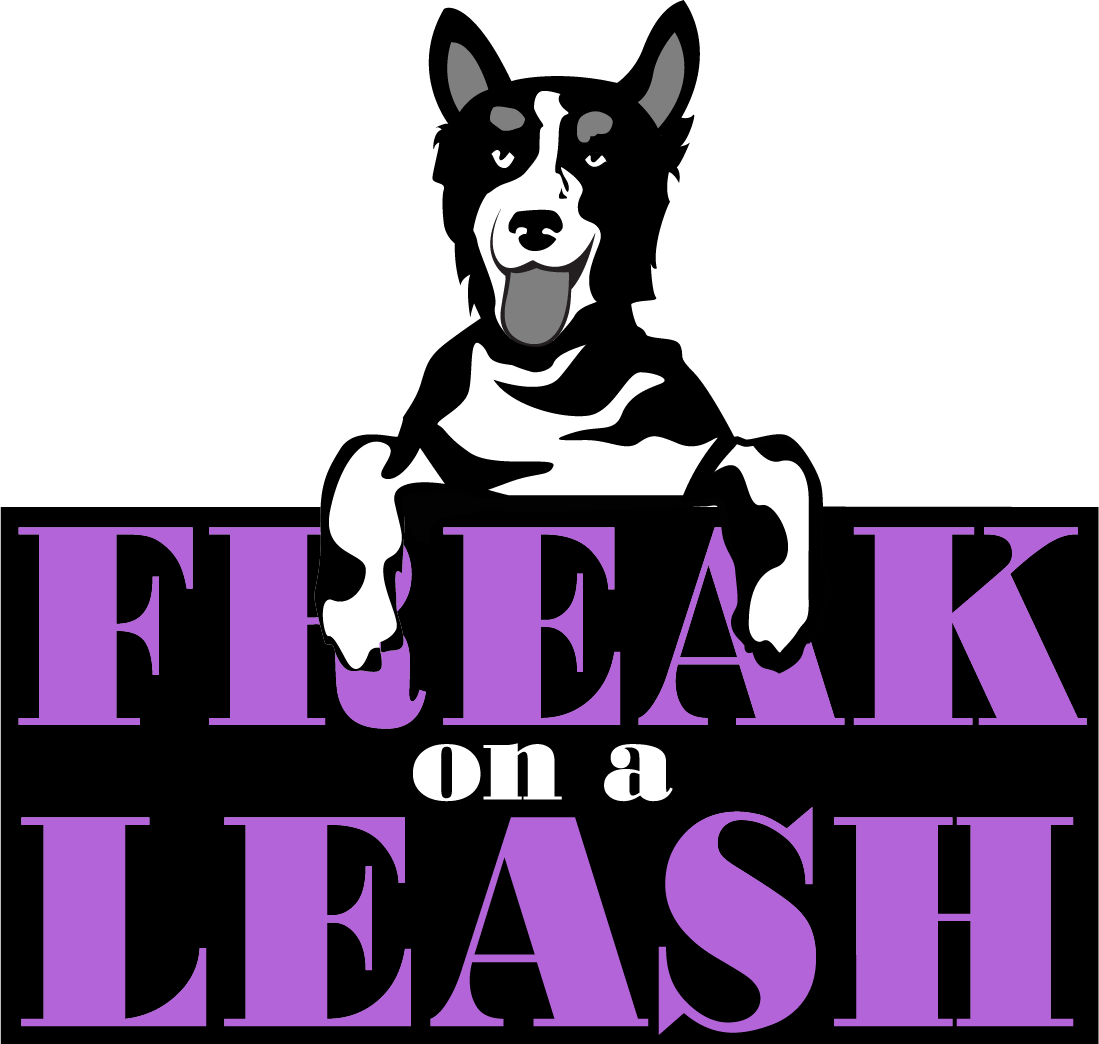Dogs have been our loyal companions for thousands of years, but their communication can sometimes be misunderstood. One of the most common ways dogs communicate is through growling. While many people associate growling with aggression, it’s important to recognize that growling can have various meanings and is an essential part of canine communication. In this post, we will delve into the different types of growling, the reasons behind them, and how to respond appropriately to your dog’s growling. By gaining a deeper understanding of growling, we can strengthen our bond with our furry friends and ensure their well-being.
The Different Meanings of Dog Growling
Growling is a vocalization that dogs use to express themselves in different situations. It’s important to remember that growling is not always a sign of aggression, nor is it always a cause for concern. Understanding the context and body language accompanying the growl is key to interpreting its meaning. Let’s explore different types of growling and what they might signify.
 Warning Growls
Warning Growls
Warning growls serve as an early warning system for dogs. These growls are often low and prolonged, indicating that a dog is uncomfortable or feeling threatened. When a dog growls in this way, it is attempting to communicate its discomfort and assert boundaries. Ignoring warning growls can lead to escalation, as the dog may feel the need to resort to more aggressive behaviors if its warning signals are not respected. It is important to approach warning growls with caution and avoid labeling dogs as “bad” or “aggressive” based solely on growling behavior. A growling dog should not be punished, rather, the underlying cause of their discomfort should be addressed. Consulting a professional, such as a dog trainer or behavior professional, can be beneficial in understanding and modifying warning growling behavior.
Pleasure Growls
Contrary to warning growls, pleasure growling is a type of vocalization that dogs make when they are enjoying a specific activity or interaction. These growls are typically short, soft, and rhythmic, often accompanied by relaxed body language. Dogs may growl playfully during interactions, such as during a game of tug-of-war or while being petted. It’s important to distinguish pleasure growling from other types of growling, as it signifies a positive emotional state. Understanding a dog’s specific body language, tail wagging, and overall behavior can help differentiate pleasure growling from growling with other meanings. If you notice pleasure growling, it is generally a good idea to continue the activity that elicits the growling, as long as the dog’s body language remains relaxed and friendly.
 Fear-Based Growls
Fear-Based Growls
Fear-based growling is another type of vocalization that dogs use to express their discomfort. This growl is often high-pitched and accompanied by submissive body language, such as cowering or lowering the body. Dogs may growl when they feel threatened or cornered, which is their way of communicating that they are scared. It’s important to approach a dog exhibiting fear-based growling with caution and empathy. Punishing or scolding a fearful dog can exacerbate their fear and potentially escalate their growling behavior. Instead, it’s crucial to address the underlying fear or anxiety through behavior modification techniques, such as desensitization and counterconditioning, with the guidance of a professional trainer or behavior professional. By understanding subtle differences in dog growling, we can provide a safe and supportive environment and meet the needs of our canine companions.
 Pain-Induced Growls
Pain-Induced Growls
When a dog is in pain or discomfort, they may vocalize their discomfort through growling. Pain-induced growls can be sudden and intense, serving as a clear indication that something is bothering the dog. It is very important to take pain-induced growling seriously and seek veterinary care immediately if you suspect your dog is in pain. Ignoring or dismissing pain-induced growling can lead to further health complications, as the underlying cause of the pain may worsen over time. Identifying and addressing the source of the pain is key to managing pain-induced growling. Providing appropriate medical treatment and comfort measures, such as pain medications or modifications to the dog’s environment, can help alleviate the discomfort and reduce growling caused by pain.
Connections Between Tail Wagging and Growling
While growling is an important vocalization in canine communication, it is often accompanied by tail wagging, which adds another layer of complexity to understanding a dog’s emotions. Tail wagging is commonly associated with happiness, but it can also indicate other emotional states, such as excitement, alertness, or tension. It’s important to recognize that a wagging tail does not always mean a happy dog. By observing a dog’s tail wagging in conjunction with their body language and vocalizations, we can gain a more comprehensive understanding of their emotional state and intentions.
Relaxed Wagging and Excitement Growls
Relaxed wagging accompanied by growling is often a sign of excitement rather than aggression. This type of growling is usually friendly and non-threatening, representing a dog’s anticipation or enjoyment of a specific activity. For example, some dogs may growl playfully when engaged in a game of fetch or during interactive play with their owners. It’s important to look out for other body language cues, such as a relaxed body posture, loose wagging tail, and open mouth, to confirm that the growling is a result of excitement. Recognizing and understanding this type of growling allows us to engage in positive interactions and strengthen our bond with our dogs.
Stiff Wagging and Aggressive Growls
On the other hand, stiff wagging accompanied by growling can be an indication of aggression or a warning sign of potential aggressive behaviors. Dogs displaying stiff wagging may be preparing for a confrontational interaction and are communicating their assertiveness. Aggressive growls are deeper and more intense than other types of growls, often accompanied by other aggressive behaviors, such as muzzle punching, barking, or biting. It’s essential to approach a dog exhibiting aggressive growling with caution, as they may escalate to aggressive behaviors if their warning signals are not heeded. Proper socialization, obedience training, and consultation with a professional trainer or canine behavior consultant can help pet owners address and manage aggressive growling behaviors effectively.
Understanding Mixed Signals from Dogs
Dogs, like humans, can sometimes send mixed signals through their body language and vocalizations, making it essential for pet owners to be observant and attentive. Mixed signals may arise due to a dog’s confusion or uncertainty, and it’s crucial to be able to differentiate between conflicting signals. This includes situations where a dog is growling while wagging its tail, which can create confusion. By analyzing a dog’s body language, overall behavior, and vocalizations as a whole, we can better decode their messages and respond appropriately. Consistent training and clear communication with our dogs can help us resolve any mixed signals and strengthen our bond.
Common Reasons Why Dogs Growl
Beyond the different types of growling, it is important to consider the reasons why dogs growl in the first place. Understanding these underlying reasons can shed light on a dog’s emotions and motivations, allowing us to respond effectively to their behavior. Let’s explore some of the common reasons that may trigger growling in dogs.
 Protecting their Territory
Protecting their Territory
Growling may indicate that a dog is protecting their territory. Dogs have an instinctual drive to guard their resources, including their living space or food. When growling occurs in this context, it serves as a warning to potential intruders, signaling that they are entering a dog’s perceived territory. It’s important to respect a dog’s boundaries and avoid approaching them when they are displaying territorial behavior. Understand that growling in these situations does not necessarily mean the dog is aggressive, but that they are acting out of instinctual behaviors. Seeking guidance from a professional trainer or behavior consultant can help address and modify resource guarding behavior effectively.
Expressing Fear or Anxiety
Another common reason for growling is fear or anxiety. Dogs, like humans, can experience discomfort in specific situations that trigger their fears. When growling is a result of fear or anxiety, it is important to approach the dog with empathy and understanding. Punishment or forceful actions will only worsen the dog’s fear, and potentially lead to aggressive behaviors. Addressing the underlying fear or anxiety through behavior modification techniques, such as desensitization and counterconditioning, can help reduce growling behavior in fearful dogs. Identifying triggers that cause fear or anxiety is also essential to managing growling effectively and ensuring the dog’s emotional well-being.
Signaling Playfulness
Dogs often growl playfully during interactions, signaling their enjoyment and enthusiasm. Playful growling is usually accompanied by a wagging tail, loose body language, and a relaxed facial expression. This type of growling serves as a form of communication during play, indicating that a dog is having fun and engaging positively. It’s important for pet owners to understand the subtle differences between playful growling and growling associated with discomfort or aggression. By recognizing playful growling, we can encourage and participate in enjoyable play sessions with our dogs, enhancing their overall well-being.
How to Respond to Your Dog’s Growling
Responding appropriately to your dog’s growling is essential to their emotional health and in maintaining a harmonious relationship. There are specific circumstances when it is best to ignore the growling, and times when professional help should be sought for effective training techniques that can modify growling behavior in a positive way.
When to Ignore the Growling
In certain specific circumstances, it may be appropriate to ignore your dog’s growling. Ignoring non-threatening growling can help prevent reinforcing unwanted behavior. For example, if a dog growls when they want attention, responding to their vocalization may inadvertently reinforce the behavior, encouraging them to continue growling for attention. However, it’s important to note that ignoring growling should only be applied when there is no risk of harm. If you are uncertain or feel unsafe, it is best to consult with a dog trainer or behavior professional who can provide guidance tailored to your specific situation.
When to Seek Professional Help
Recognizing when to seek professional help is crucial when dealing with growling behavior in dogs. If your dog’s growling is concerning, persistent, or escalating, it is advisable to consult with a certified dog trainer or veterinarian. Professional intervention is particularly important when growling is accompanied by aggressive behaviors such as lunging, snapping, or biting. A behavior professional can assess the specific circumstances and design a behavior modification plan to address the underlying causes of your dog’s growling effectively. Seeking professional help sooner rather than later can prevent growling from developing into more dangerous aggressive behaviors, ensuring the safety of both the dog and those around them.
Effective Training Techniques for Growling
Modifying growling behavior requires consistent and positive training techniques. The following are some effective strategies to consider:
- Positive reinforcement: Rewarding calm behavior and desired alternative behaviors can encourage positive changes and reduce growling.
- Desensitization: Gradually exposing the dog to triggers that elicit growling in a controlled and positive manner can help reduce their sensitivity.
- Counterconditioning: Pairing the presence of a trigger with positive experiences, such as treats or play, can create new associations and decrease growling behavior.
- Behavior modification: Working with a dog trainer or behavior professional who specializes in fear or aggression can provide professional guidance and tailored strategies for managing and modifying growling effectively.
- Consistency and patience: Consistently applying training techniques and remaining patient throughout the process are key to long-lasting behavior changes.
The Role of Breed in Canine Communication
While growling is present across all dog breeds, it’s important to recognize that specific breeds may have their own breed-specific tendencies when it comes to vocalization. Understanding how different breeds communicate can aid in interpretation and effective communication with our four-legged friends.
Recognizing Breed-Specific Growls
Some dog breeds may exhibit breed-specific growling tendencies based on their historical purposes and traits. For example, herding breeds, like Border Collies, may have specific vocalizations as part of their ingrained herding instincts. Recognizing these breed-specific growls requires familiarity with different breed characteristics, vocalizations, and body language. By understanding how specific breeds express themselves through growling, we can better interpret their communication and respond accordingly, strengthening our bond with our dogs.
Breed-Specific Tail Wagging Patterns
Similar to growling, tail wagging patterns can also vary among different dog breeds. Each breed may have its own unique tail wagging style and meaning. For example, some breeds, like Basenjis, do not wag their tails traditionally, while others, like Golden Retrievers, have a famously exuberant wag. Understanding breed-specific tail wagging cues can complement our understanding of growling and provide additional insights into a dog’s emotional state. By observing the combination of tail wagging and growling, alongside other body language cues, we gain a more comprehensive understanding of our dog’s intentions and emotional well-being.
Decoding Other Aspects of Canine Body Language
In addition to growling and tail wagging, dogs communicate through various other aspects of their body language. A dog’s posture, facial expressions, and overall behavior all communicate their underlying emotional state. By paying attention to these aspects of communication, we can gain additional valuable insights into their feelings and intentions.
Reading a Dog’s Posture
A dog’s posture can indicate its level of comfort or discomfort, assertiveness, or submission. Certain postural cues, such as wide eyes or raised hackles, may suggest feelings of fear or aggression. Paying careful attention to a dog’s posture can help assess their mood and potential reactions. For example, a dog with a low, wagging tail, relaxed body, and soft eyes is likely feeling calm and friendly, while a dog with raised hackles, stiff body, and a tense stance may be signaling caution or a potential threat. Accurately interpreting a dog’s posture is fundamental in building a positive and respectful relationship.
Understanding Facial Expressions
Dogs use facial expressions to convey various emotions and intentions. Interpreting a dog’s facial expressions, such as wide eyes, bared teeth, or relaxed eyes, is key to understanding their emotional state. Recognizing signs like lip licking or showing teeth can prevent misunderstandings and potential conflicts. Different breeds may have subtle differences in their facial expressions, so it is important to become familiar with your specific dog’s expressions. By understanding a dog’s facial expressions, we can better gauge their mood, strengthen our bond, and address any behavioral issues that may arise.
Does a Wagging Tail Always Mean a Happy Dog?
Contrary to popular belief, a wagging tail does not always signify a happy dog. While tail wagging can be a sign of happiness, it’s important to recognize that it can also indicate other emotions, including alertness, uncertainty, or tension. Understanding the context of a dog’s tail wagging is essential for accurate interpretation.
Tail wagging is a complex behavior. It is influenced by different factors such as speed, position, and intensity. For example, a high, stiff wagging tail may indicate a dog’s alertness or potential aggression, while a low, loose wagging tail typically suggests relaxation and friendliness. Additionally, a fast wagging tail may signify excitement, whereas a slow wagging tail held close to the body might suggest caution or uncertainty. It is critical to always interpret tail wagging alongside other body language cues, vocalizations, and the specific circumstances of the situation to get a complete picture of the dog’s emotional state.
By understanding the subtle differences in tail wagging, we can more accurately interpret a dog’s body language and respond accordingly, ensuring positive interactions and communication with our furry friends.
Conclusion
Understanding growling and canine communication is vital for responsible pet ownership. By deciphering the various types of growls, tail wagging patterns, and body language cues, you can better interpret your pet’s feelings and needs. Whether it’s a warning growl, pleasure growl, fear-based growl, or pain-induced growl, each sound carries valuable information about your dog’s state of mind. Knowing how to respond appropriately, whether through training techniques or seeking professional help when needed, can strengthen the bond between you and your canine companion. Staying attentive to your dog’s communication signals will foster a long term harmonious and understanding relationship.

